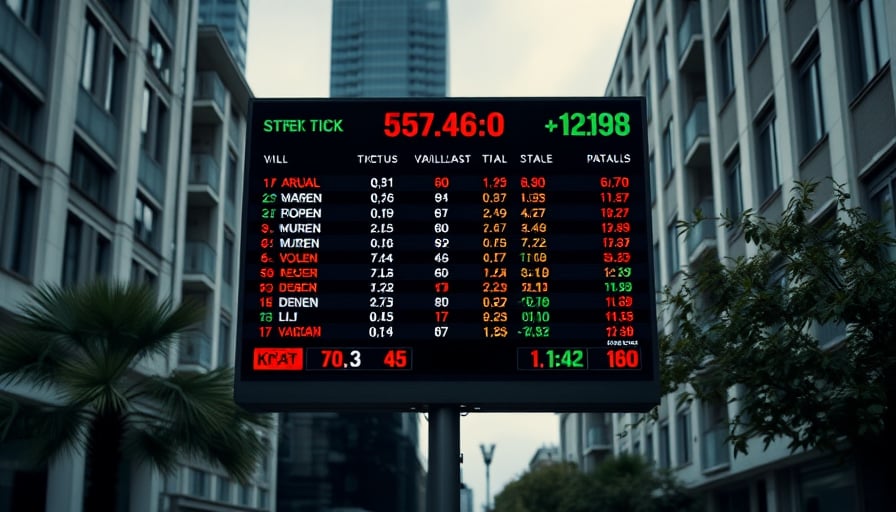Useless Coin’s Position in a Market Rife With Fear, Staking Hype, and Media Frenzy
Useless Coin (USELESS) remains a peripheral player in a market that is currently dominated by headlines of regulatory uncertainty, infrastructural congestion, and the meteoric rise of liquid‑staking projects on Solana. Despite a 52‑week high of $0.41735 and a 52‑week low of $0.069863, the token’s market capitalization of roughly $224 million reflects a fragile ecosystem that has yet to establish substantive fundamentals or a clear use case.
Market Sentiment Collapses Amid Tariff Speculation
On 2025‑10‑11, Crypto Populatin’s coverage highlighted a precipitous drop in the Crypto Fear & Greed Index to 27, a “Fear” reading, following President Donald Trump’s announcement of steep new tariffs on China. The index fell 37 points from the previous day’s 64, a stark illustration of the contagion that geopolitical shocks can have on digital assets. While the index itself is an aggregate sentiment gauge, its immediate effect on liquidity and trading volume is palpable. Leading exchanges such as Binance and Coinbase experienced “significant congestion,” revealing that even the most robust infrastructures are vulnerable to market panic. In this context, Useless Coin’s relatively low market cap makes it highly susceptible to price swings triggered by macro‑level events.
Solana’s Liquid‑Staking Surge Overshadows Small Caps
The same day, Pudgy Penguins announced its transition to a liquid‑staking provider on Solana, introducing the PenguSOL token. This move signals Solana’s continued emphasis on staking as a revenue stream and further entrenches the ecosystem’s dominance over meme‑centric or low‑utility tokens like Useless Coin. The announcement, which came from a platform that has historically operated within the meme space, demonstrates how even niche projects are pivoting toward staking to attract liquidity and justify their existence.
Simultaneously, Bitwise Asset Management declared that its forthcoming Solana Staking ETF would carry a modest 0.20 % fee, positioning itself as a competitive alternative in an increasingly crowded ETF market. The firm’s strategy underscores the importance of cost‑efficiency for institutional investors, who are now looking to expose portfolios to staking rewards without compromising on fee structures. This development further marginalizes small‑cap coins that lack staking infrastructure or yield‑generating capabilities.
Useless Coin Gains Visibility, Not Value
The most recent coverage from cryptopanic.com and coinpedia.org identified Useless Coin as one of the “Top Trending Coins to Watch Out For in This Bull Run,” alongside Binance Coin (BNB), Solana (SOL), Fetch (FET), Tron (TRX), and Nexo (NEXO). While the list appears to be an attempt at inclusive coverage, it also reflects an industry narrative that equates “trend” with “viability.” Useless Coin’s inclusion is more a testament to its visibility on social‑media platforms than to any substantive market traction.
Santiment’s analysis, cited by both news outlets, confirms that Useless Coin dominates online discussions, but this dominance is rooted in hype rather than adoption. The token’s price has hovered around $0.2688 as of 2025‑10‑09, far from its 52‑week high of $0.41735, indicating a stagnant upside potential. The persistent low floor of $0.069863 suggests that speculative interest is not translating into a sustainable price base.
Broader Ecosystem Movements Do Not Favor Useless Coin
Other noteworthy developments, such as Sorare’s migration from Ethereum’s StarkEx layer to Solana and the launch of Bitwise’s Solana staking ETF, reinforce Solana’s position as the preferred platform for high‑performance, low‑cost transactions. Useless Coin, whose primary network remains unspecified in the provided data, is unlikely to benefit from these shifts unless it can align with Solana’s infrastructure or offer comparable staking rewards.
Conclusion
Useless Coin’s current trajectory is defined by a volatile sentiment environment, a surge in liquid‑staking activity on competing platforms, and a lack of concrete utility. Its modest market cap and price instability make it a high‑risk proposition for investors. While it continues to appear in trending lists, the token’s future hinges on its ability to deliver tangible value beyond speculative hype—a challenge that remains unmet as of the latest data.
